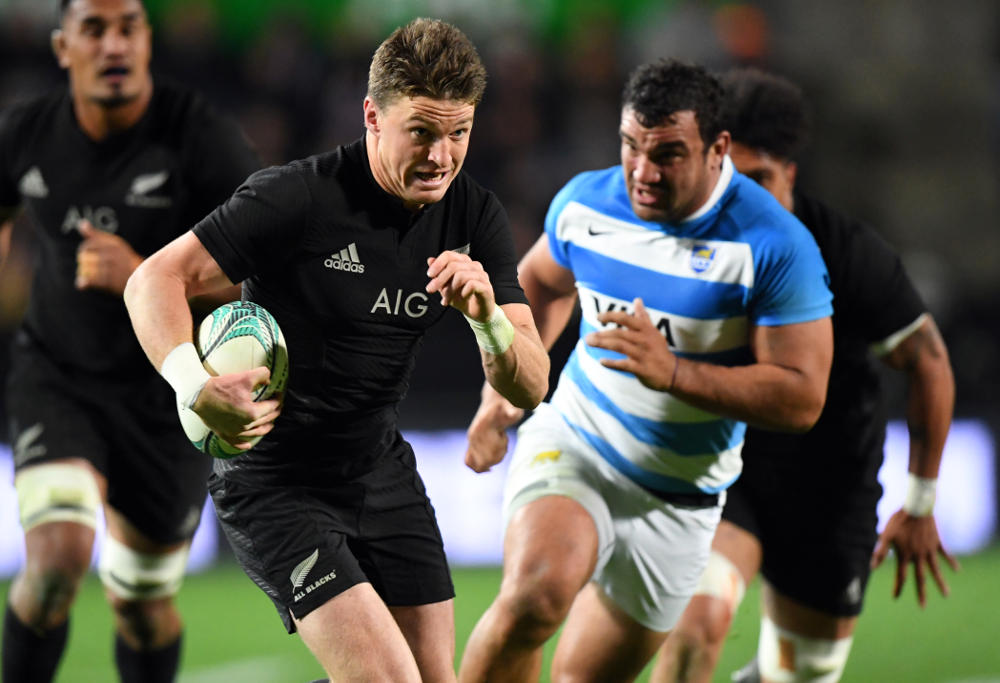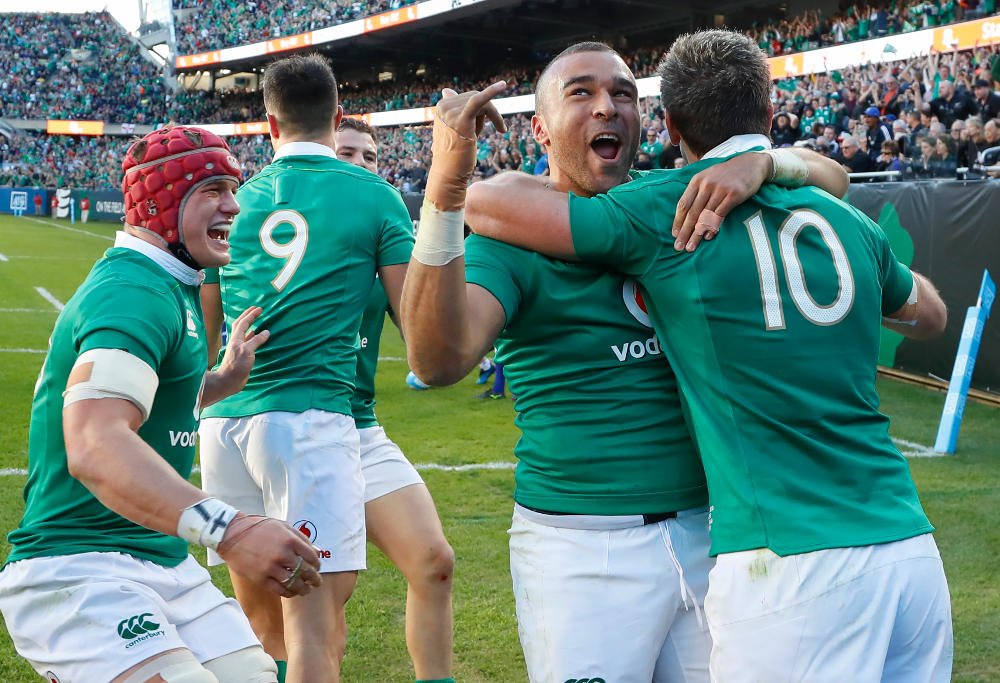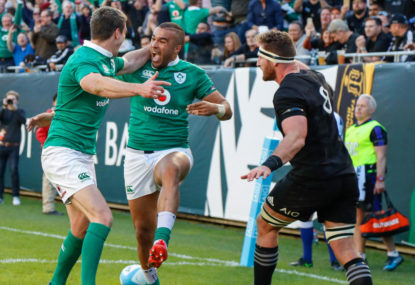Ireland answered the call. In a previous essay I posited this choice when imagining a reign on top of the rugby world.
(1) Fashion yourself after the All Blacks, but do it a wee bit better; or
(2) Build something different, something distinctly anti-Antipodean.
The Irish did not try to mimic the All Blacks. Their props are scrum machines who only know one direction in the tackle: down and through, like the golfers preach.
Their hookers are not fleet-footed playmakers. Playing in the City of Broad Shoulders which invented the skyscraper, they locks are a certified skyscraper and a man with very broad shoulders.
Their loose forwards kept their heads down and finished their carries without distracting thoughts of lovely offloading dreams. No, the Irish blindsider named Stander, who was once a champion discus thrower and flyhalf in the Cape, found knee-high tunnels in the tight-loose and presented the ball to his superhero scrumhalf with supreme decisiveness.
The snap-passing Conor Murray did not follow Nugget Smith around trying to copy him; he ran past Smith as if the former world’s best halfback was just another of the 50,000 Irish fans at Soldier Field. Jonny Sexton and Stander and the rest of the Irish team found Beauden Barrett and hit him hard – legally – on almost every play, which turned BBBBB into a Beleaguered Backtracking Backpocketed Barricaded Boy on the run.

The Irish wings looked faster than the All Blacks’ semi-speedsters, and in a big surprise, Rob Kearney and his fellow Gaelic chasers ruled the air. Ben Smith mistimed a jump or just did not have enough spring in his step.
So, we can see the makings of a blueprint, even if the Irish never beat the All Blacks again in this century.
1. Your pack does not need to be fancy
Build a pack with specialists at each position. Each man focuses on outplaying the All Black opposite. Sam Cane was the only All Black who won parity with his Irish rival. Stander outplayed Liam Squire comprehensively, Rory Best was the best hooker on the paddock without sprinting to the house, and the locks in green played like locks in green.
The thing is that a pack with polished Test-level competencies in the set pieces, who arrive on time at the ruck or breakdown, who play low and powerfully, who realign on attack to give your scrummie options but let only the best ball-carriers carry the most, and take utter joy in tackling, and don’t lose the plot and make the referee reach for a card.
That pack can be a platform for glory if at least half of them are as good as Stander, the wonderfully awkward-looking yet effective Devin Toner, frighteningly strong Jack McGrath, and the 80-minute ballplayer Jamie Heaslip, with a couple of others playing the games of their lives (Donnacha Ryan and the choke-tackling Tadhg Furlong).
England now and South Africa still have the building blocks of an All Black-beating pack, which of course requires depth given that we play and follow a contact sport of the most brutal kind, but in the Springboks’ case, there are some underperforming forwards who cannot be dropped if half the team is to be rid of unacceptable whiteness by 2019.
Australia looks to be building a second row to hang with – if not trouble – Brodie Retallick and Sam Whitelock, but it is that front row ruggedness of Ireland’s that is a non-negotiable.
2. Speed at the edges
New Zealand has no sprinting medals in the Olympics. The 100 metres and the 400 metres is always won by Great Britain or a former British colony, but for decades, that has been modified by “with African heritage.”
No team can make the ball spin and sing and move as fast as a South Pacific Island team like New Zealand or its smaller neighbours. But sheer foot speed is not an edge they can likely own if England, France, the U.S., Canada, and South Africa are opening our sport to the fastest in their lands.
Add leaping ability – clearly the aerial battle was won by a brave and skilled Kearney over the oddly tentative Ben Smith. Imagine if all 9.9 or 10.0 second seven-foot jumpers were in the back three of English, South African, and French teams? The touchline helps defend big steamrollers, but nothing can defend aerial superiority, and speed is the rawest of weapons in rugby if space can be created.
3. A midfield that smashes things
And runs good hard lines, like the match winner. But a smashing midfield, crash-tackling and counter-rucking, throws a serious kink in the All Blacks’ sweet moves. It looks like Allister Coetzee may have finally (six or seven Tests too late) recognised the value of Rohan Janse van Rensburg in a No 12 jersey – fast and strong and almost impossible to trip up with anything other than a one or two-person old school wrap-up tackle – and it is quite certain that Steve Hansen is missing Ma’a Nonu right now.
4. A stop-start rhythm
All Blacks are like DJs. Silence is their enemy. Calm repose is not their thing. Ireland kept the ball-in-play to a minimum, but when it was, they got the ball over the line, over the poles, over the touchline, and over the gainline. But then it was choppy again, and much to their liking. Few quick throws, many maul drives, allowing the backline to rest, and ruck targets close to the pack.

5. Belief
I don’t believe enough of the current Boklings and Wallabies; let alone the Pumalitos and Boyos and Jocks and Bleues and others, really believe – deep down – they can beat the All Blacks unless the All Blacks beat themselves.
Maybe Eben Etzebeth, Michael Hooper, and Bryan Habana think so. But not most of the teams. The Irish clearly did believe they could; this was obvious by twenty minutes in.
The English probably have convinced themselves they are the All Blacks’ peers, too (this may be a dangerous delusion), but the point is we know that in all sports, we can defeat ourselves before we even take the field, with indecision or doubt or fear.
6. Defensive mania (but in a calm, planned way)
It may sound strange to talk about defence when we just saw Ireland let in a lot of tries but still win. But these tries were only scored by extreme fortune in one case (a header), squeezed in a corner, and due to a miracle offload.
To beat the All Blacks you must be more interested in defence than they are; and make no mistake, Steve Hansen and his crew will be outraged by the Irish tries, which came in many ways, some soft and some hard, but none against the run of play or depending on some outrageous stroke of good fortune.
So, a harder-working and more specialised pack, utter commitment to body position lower than the All Blacks’, a brutal flyhalf that beats up his opposite number, speed and leaping ability on the edges to challenge the All Blacks in the place they cannot rule: the air.
Sounds like 2009, but I don’t mean old school kick-chase. I mean a brutally low and hard 80-minute charge with angle-shifting speed, and dominance of the gainline.
This requires special mindsets, more than anything. A commitment seen in Chicago and in every other (rare) winner over this–the world’s greatest rugby team–for the last eight years.































































































